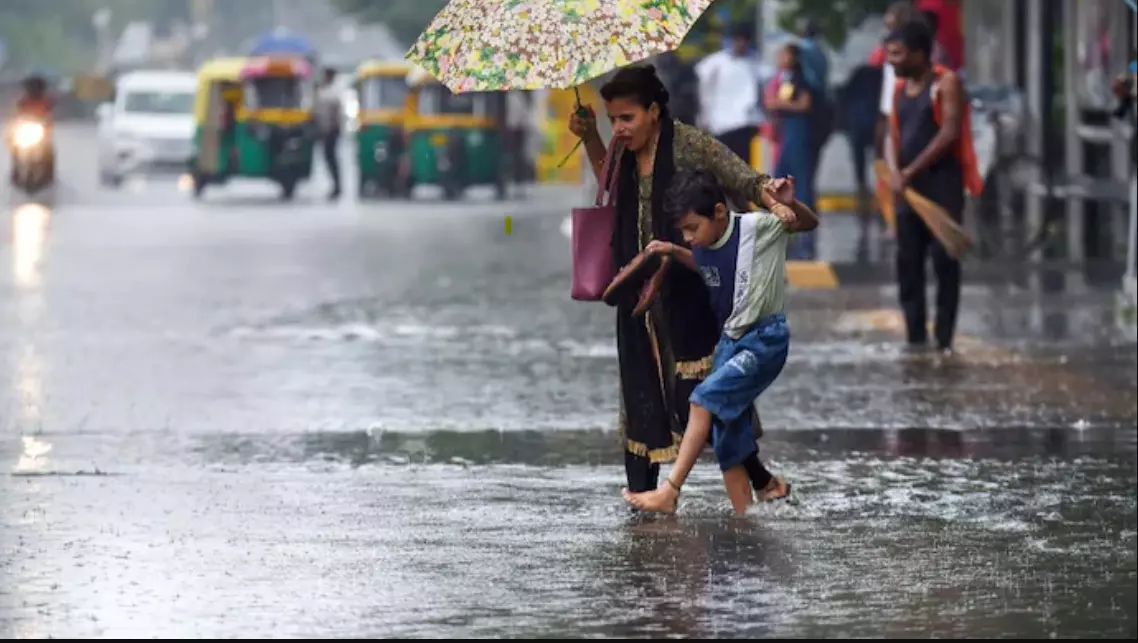Ravaging rains

Following a sweltering summer, the much-awaited rains in northern India are now breaking records — claiming lives, inflicting pain, and taking a deep toll on finances. Furthermore, the fallouts of disproportionate precipitation, ranging from water logging to landslides, are only exacerbating the risks and inconveniences faced by people. In absence of the knowledge of a direct causal link between climate change and aberrant precipitation, it may be easy to brush aside the unfolding catastrophe as a mere seasonal phenomenon. Such an approach, however, leads to an inertia against acknowledging the recurrent nature of the catastrophe and devising strategies to minimise the damage on a regular basis. It is true that precipitation is an essential natural phenomenon, but year after year, irregularities in precipitation patterns are increasing, creating a need to see it as an annual risk as well. As per recent reports, at least 19 people have been killed in the last three days in the north Indian region. The recent data released by India Meteorological Department (IMD) reveals that excessive rain during the first eight days of July has bridged the gap between required normal rainfall and the current levels. In fact, the situation has been upturned from that of a deficit to surplus. The surplus rainfall, however, has come with its own problems. In the first place, the rainfall is very unevenly distributed across India. As per IMD data, while north India has witnessed 59 per cent excess rainfall, eastern and north eastern regions have witnessed a deficiency of 17 per cent. Central India has recorded a moderate excess, and south India, despite improvement, faces a deficiency of 23 per cent. This not just means that a large part of the country is still facing rainfall deficiency, but also that those witnessing surplus find themselves in an unfavorable condition due to the steep excess. The growing abnormalities and discrepancies in the rainfall pattern call for a strategic planning on this front. A clear and concise compilation of data around rainfall patterns should be conceived for the purpose of providing appropriate policy assistance to cultivators in different regions. In the long term, this will ensure that aberrant rainfall patterns do not break the back of a large chunk of rain-dependent cultivators. Apart from the agricultural community, the urban dwellers — particularly those residing in slums and low-lying areas — are also facing the brunt of the rain rampage. It is no mystery that even in normal rainfall, the lanes and drains of the majority of urban localities get overwhelmed. Under the present situation, security forces are deployed in various parts of the country to rescue people from landslide debris and their own houses where they are stranded. For optics, leading political figures are holding high-level meetings to discuss the problem of water-logging. In practice, they have been ignoring the problem for decades. Evidently, administrations in mega cities have reached their wits’ end in finding a meaningful solution to this problem. The unabating plight of those living at the margins of urban localities is still ill-documented. Each year, the monsoon forces them to live in unlivable conditions for the entire rainy season. It is only the catastrophic precipitation like the present one — leading to deaths — which makes their plight worthy of becoming headlines! Prolonged persistence of dingy and filthy living conditions renders them vulnerable to a host of water-borne diseases. With regular weather patterns undergoing a dramatic shift, their largely undocumented vulnerability is likely to increase with time. Apart from this, the transportation routes are reported to be badly damaged, particularly in the mountainous terrains. As the season coincides with the timing of a couple of annual religious marches, it is imperative that people should exercise necessary constraints. It is threatening to see throngs of people ready to march along the risky terrains even as alarms are being floated by weather experts. Given the fact that Indian citizens are so intricately tied to religion, it becomes the responsibility of the governments to ensure their safety to the best possible extent. If weather science necessitates, religious processions should even be put on hold. In sum total, the excessive rains across India present multiple challenges — both short-term and long-term. It will not be easy for states to handle all the problems simultaneously. Administrations must accord due energy and resources to avoid the worst.



